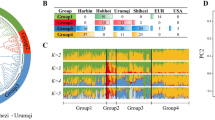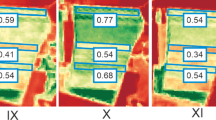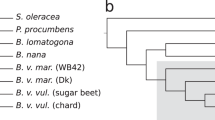Abstract
IN the course of breeding experiments, Mr. B. Crombie of the Irish Sugar Co. observed in 1946 that three separate field crops of a new family of sugar beet showed in each case approximately 25 per cent of ‘‘yellowed plants two to three weeks after singling. He stated that the disease resembled typical virus yellows but did not appear to spread to neighbouring beet crops. The parent plants of the family (No. 41) had been selected from good commercial beet crops in a relatively virus-free district, but no information was available as to their freedom or otherwise from yellows. The cross had been made in 1945 in a pollen-proof cage.
This is a preview of subscription content, access via your institution
Access options
Subscribe to this journal
Receive 51 print issues and online access
$199.00 per year
only $3.90 per issue
Buy this article
- Purchase on SpringerLink
- Instant access to full article PDF
Prices may be subject to local taxes which are calculated during checkout
Similar content being viewed by others
Author information
Authors and Affiliations
Rights and permissions
About this article
Cite this article
CLINCH, P., LOUGHNANE, J. & MCKAY, R. Transmission of a Disease Resembling Virus Yellows through the ‘‘Seed of Sugar Beet. Nature 161, 28–29 (1948). https://doi.org/10.1038/161028b0
Issue date:
DOI: https://doi.org/10.1038/161028b0
This article is cited by
-
Production of disease-free seed
The Botanical Review (1961)
-
Yellowing Disease of 'Family 41' Sugar Beet
Nature (1949)



